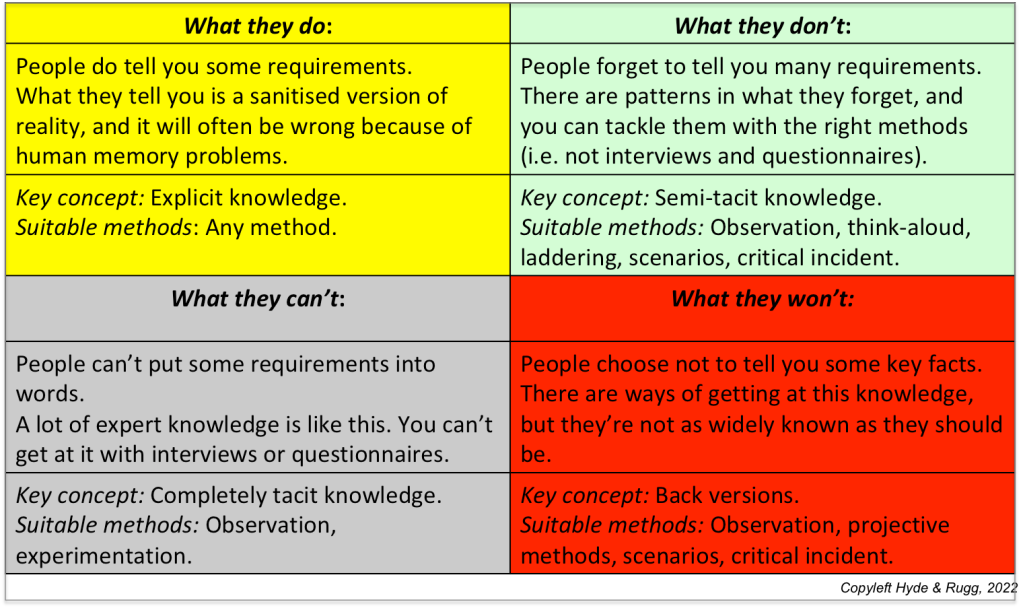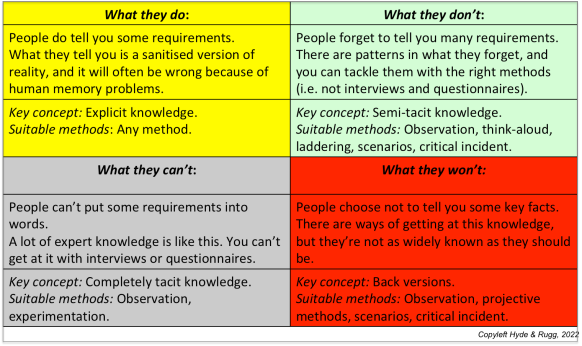By Gordon Rugg
Sometimes, product development is straightforward. The client tells you what they want; you produce it; they’re happy with it, they pay you, and everything is fine. This is known in the field as the waterfall model of development; once the client has signed off on the requirements, the process then moves irrevocably onwards, like a river going over a cliff.
When you and the client are dealing with familiar territory, this approach usually works reasonably well. Sometimes, though, things don’t work that way. You’re particularly likely to hit problems when you’re developing something that’s new territory for you and/or the client.
One common problem involves the client changing their mind part-way through development.
Another involves the client being unhappy with what you produced.
Communication problems are another frequent source of trouble, with you trying to make sense of just what the client wants, and getting more and more frustrated.
If you’re in that situation, or you think there’s a risk of getting into it, you might want to try iterative non-functional prototyping. It’s a lot simpler than it sounds, and it’s a fast, cheap, efficient way of getting to the heart of what the client wants, particularly when clients don’t actually know just what they want at the start. It involves looping through mockups systematically until the requirements are clear.
This article gives a short introduction to the core concepts and the process. It should be enough to let you get started; there’s supporting material elsewhere on this blog which goes into more detail about the underpinnings, which I’ve linked to within the article.
Waterfalls and loops Images from Wikimedia Commons: Attributions are given at the end of this article
Images from Wikimedia Commons: Attributions are given at the end of this article
Continue reading →







